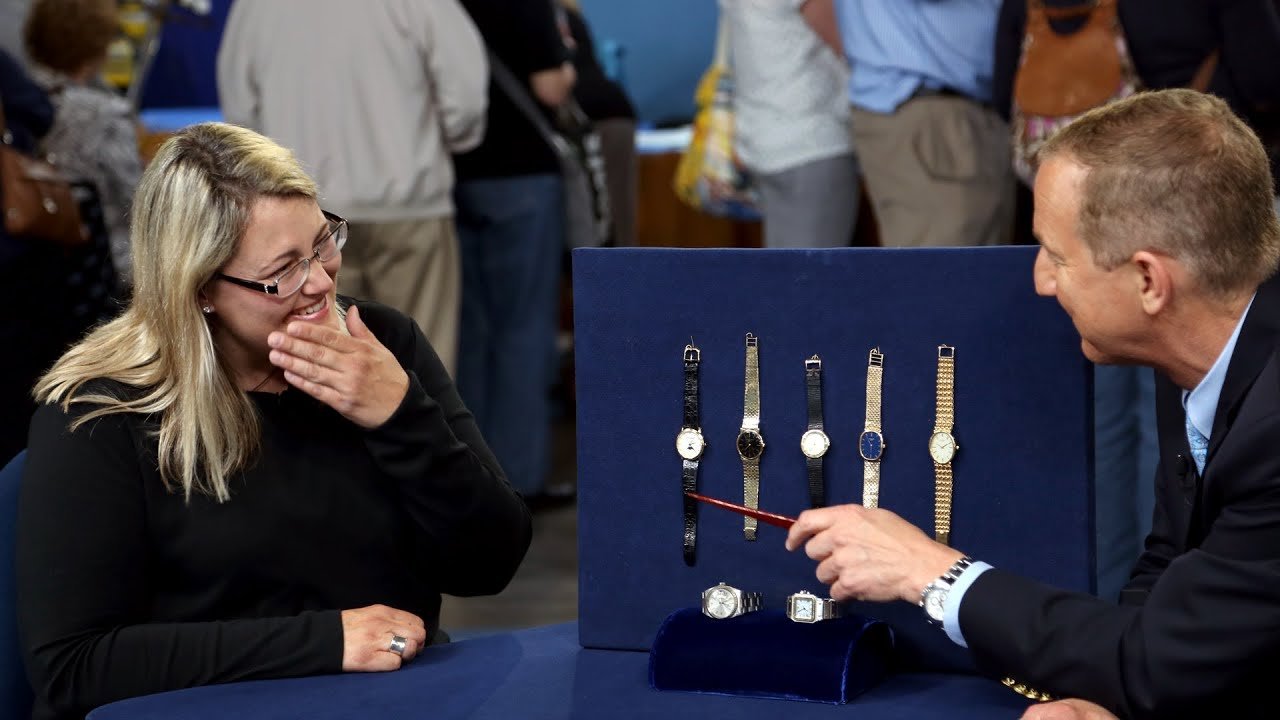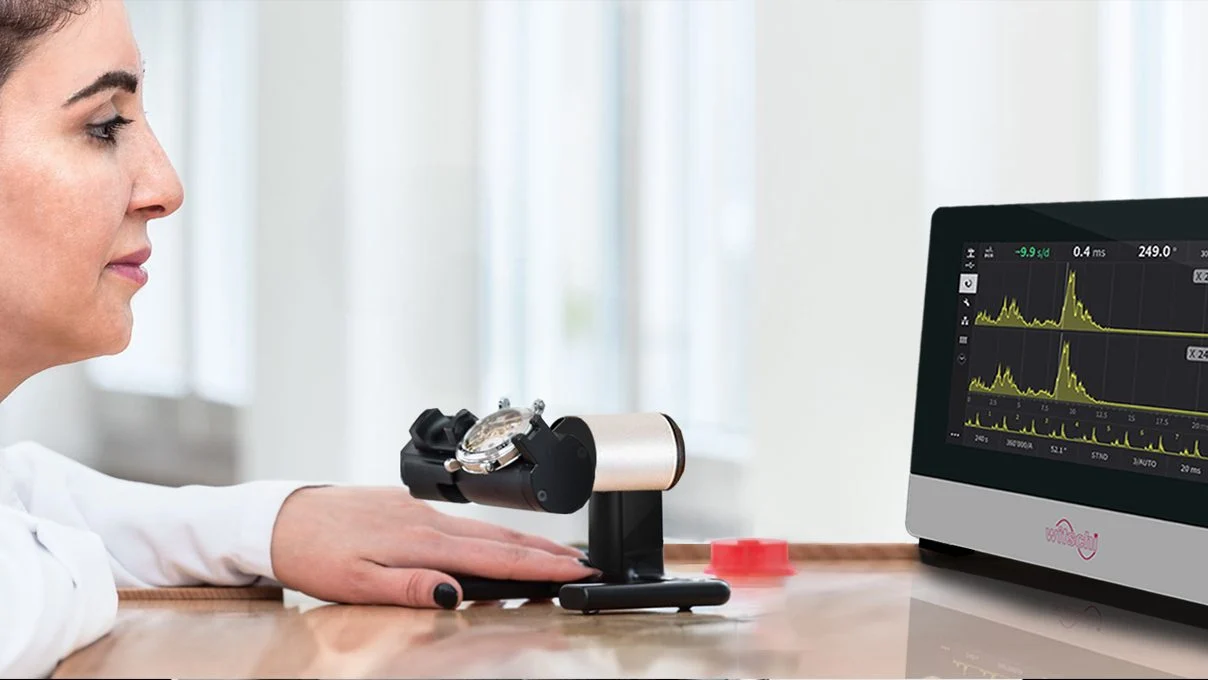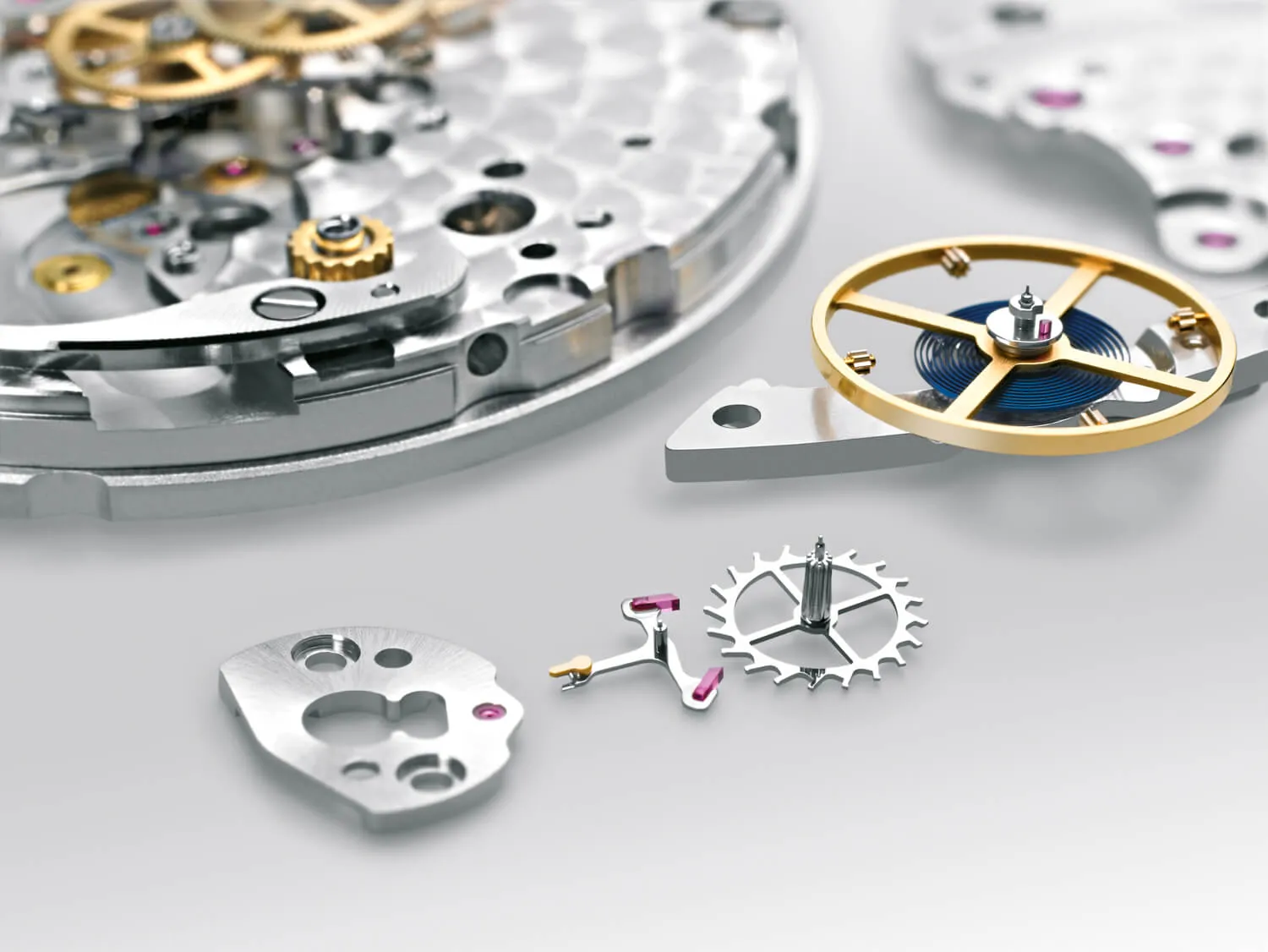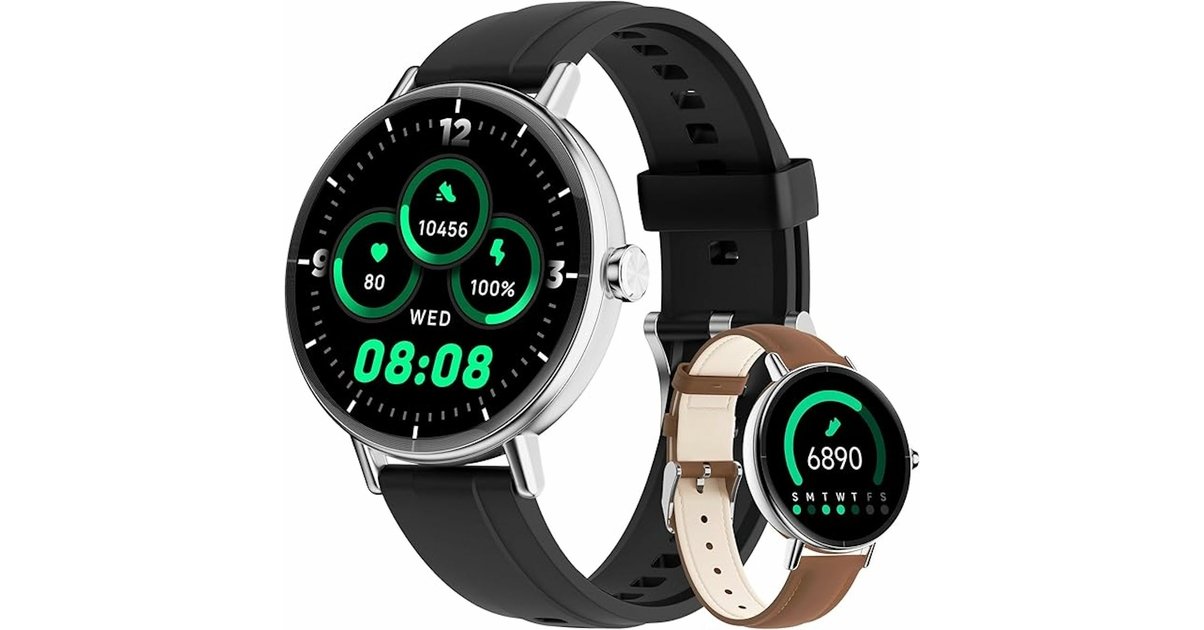GUEST: I brought in a collection that’s my dad’s. He’s 86, and he’s collected watches for maybe 30-some years. He always wore a nice watch, like a Rolex, something like that. His health was failing, so he started liquidating things, and we were going through his office
And found a cardboard box and opened it up, and these watches were in there. We really don’t know anything about them. We recognized the Cartier and Rolex brands, but the other ones we did not, so we thought it would be nice to get an appraisal.
APPRAISER: If you just had to guess, any thoughts? GUEST: I really have no idea. I mean, I would maybe guess a couple thousand dollars or something. I don’t even know what a new Rolex costs– maybe a few thousand dollars.
APPRAISER: When you brought the box and I opened it, as a watch collector, I started to get pretty excited because it’s a sort of potpourri of the best names in the world. We’ll first start with this watch here. This is a Patek Philippe. It’s 18-karat gold. The bracelet’s 18-karat gold.
Everything about it is completely original and correct. GUEST: Okay. APPRAISER: This is another Patek Philippe. This is called the Ellipse. It has a blue dial. It’s all 18-karat gold. It has an 18-karat gold bracelet, although the bracelet did not come from Patek Philippe; it was added later. This watch is an Audemars Piguet.
GUEST: Okay. APPRAISER: Superfine Swiss watch. It has enamel numbers around the bezel. A beautiful man’s dress watch. This watch is an Audemars Piguet sold by Gubelin. Gubelin is one of the most famous jewelry stores in the world in Switzerland. GUEST: Oh, okay. APPRAISER: This had at the time the thinnest mechanical movement made.
It was called the 9 Duzzium movement. If we look at it sideways, it’s paper-thin, yet it’s a mechanical wind watch. GUEST: Okay, wow. APPRAISER: This watch was made by Blancpain, a 200-year company from Switzerland, and they were made in this beautiful white farmhouse in the VallÈe de Joux.
This is an 18-karat gold watch. It has a day, a date, a month and a moon phase. This is a stainless steel Rolex Datejust. It has a fluted bezel, and it’s called an oyster bracelet. This is the classic Cartier Santos. It’s an automatic watch with a white enamel dial.
It’s made of 18-karat and stainless. The watches were all made between the early 1960s through the mid-1980s. GUEST: Oh, okay. APPRAISER: To give an idea of values, and the values of the watch that I’m talking are generally on the retail level, this watch here, the Patek Philippe, we’re talking somewhere
In the $12,000 to $14,000 range. GUEST: Wow. APPRAISER: This Patek Philippe here, we’re talking in the range of $7,000 to $9,000. GUEST: Oh, my goodness. APPRAISER: The Audemars Piguet with the enamel bezel, we’re talking in the neighborhood of $4,000 to $6,000. GUEST: Oh. APPRAISER: The ultra-thin Audemars Piguet from Gubelin, all 18-karat with the 9 Duzzium
Movement, we’re probably talking in the range of $9,000 to $10,000. GUEST: I’m not going to remember any of this. APPRAISER: The 18-karat gold Blancpain, we’re talking in the range of $8,000 to $10,000. GUEST: Wow. APPRAISER: The Cartier Santos, 18-karat and stainless, in the $3,000 to $4,000 price range.
And the classic Rolex Datejust in stainless steel, in the $3,000 to $4,000 range. GUEST: Wow. APPRAISER: As a group of watches in that little cardboard box you brought in, at retail, you’ve got somewhere between $46,000 to $57,000 worth of watches there. GUEST: Oh, my goodness. APPRAISER: Congratulations. GUEST: Thank you. That is amazing.
APPRAISER: A little more than you thought. GUEST: Yes, a lot more than we thought.






